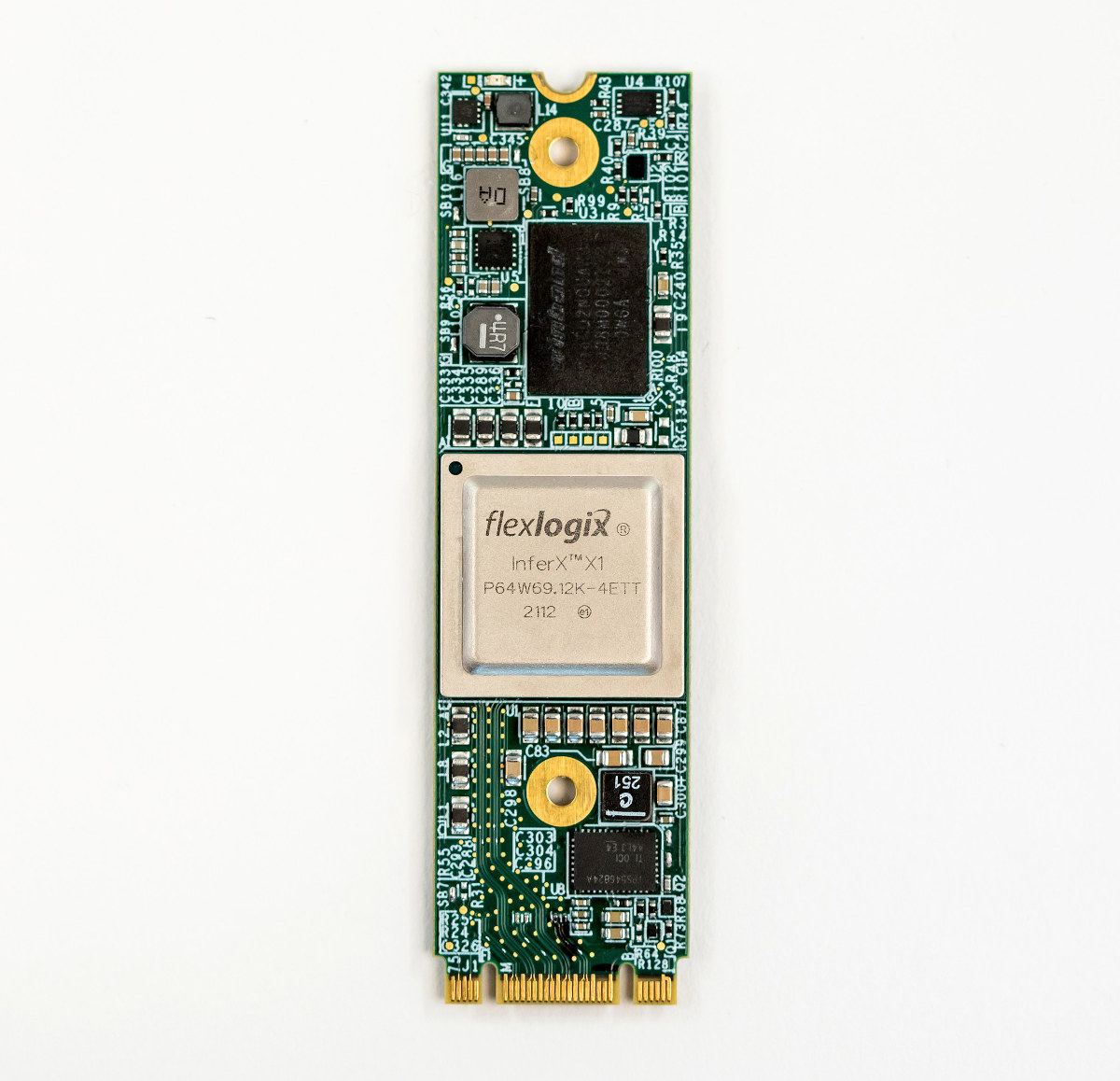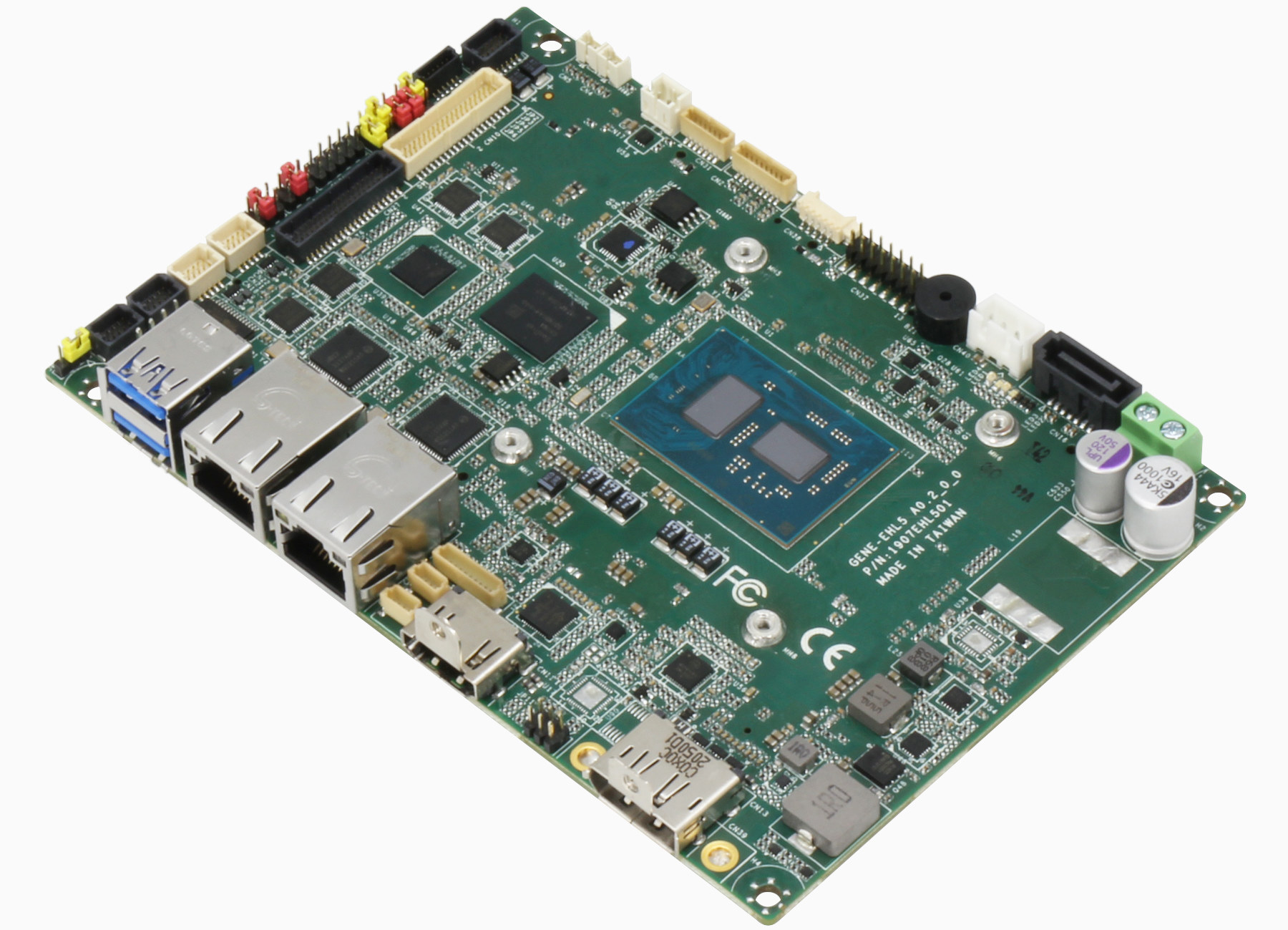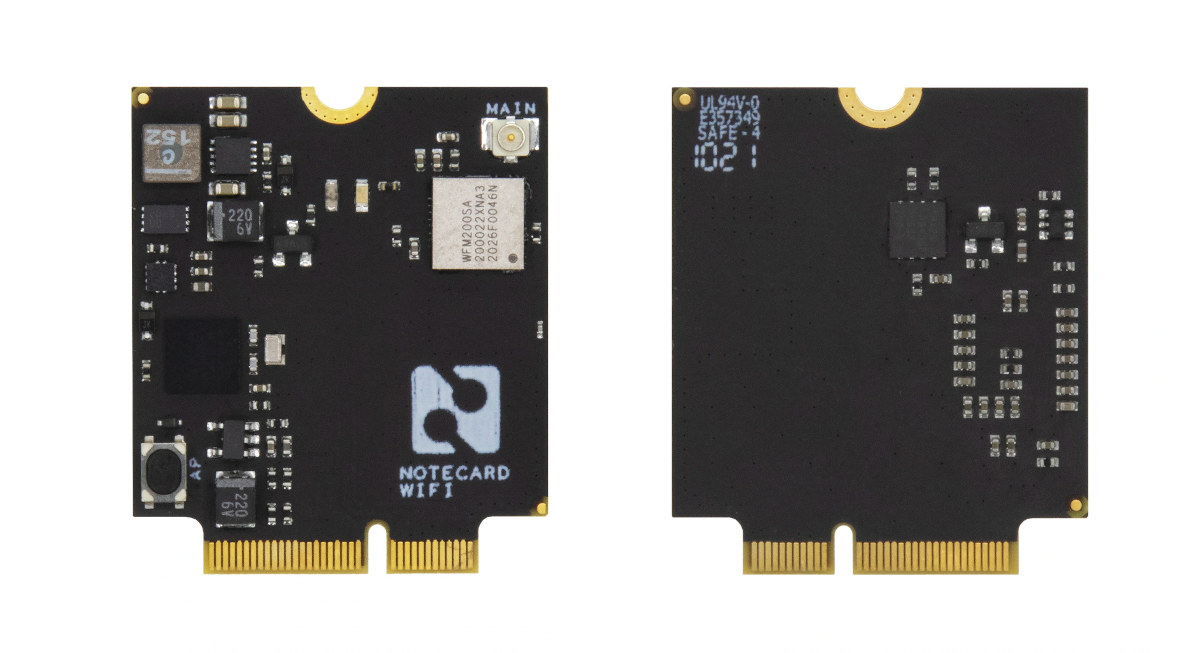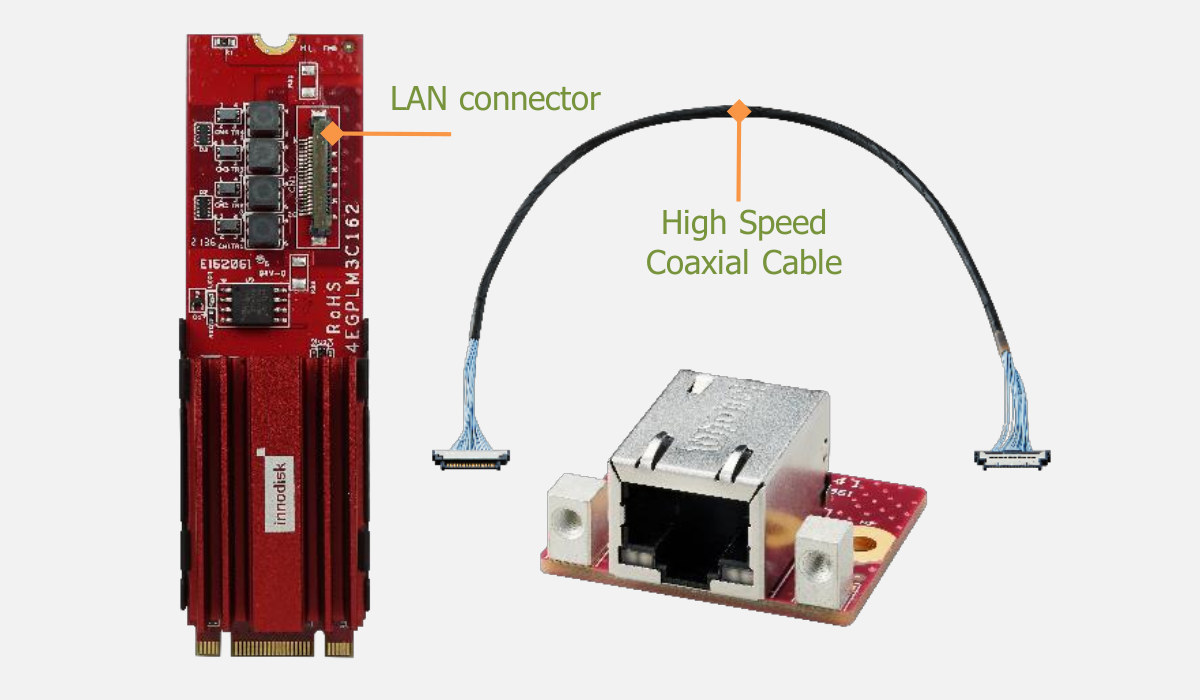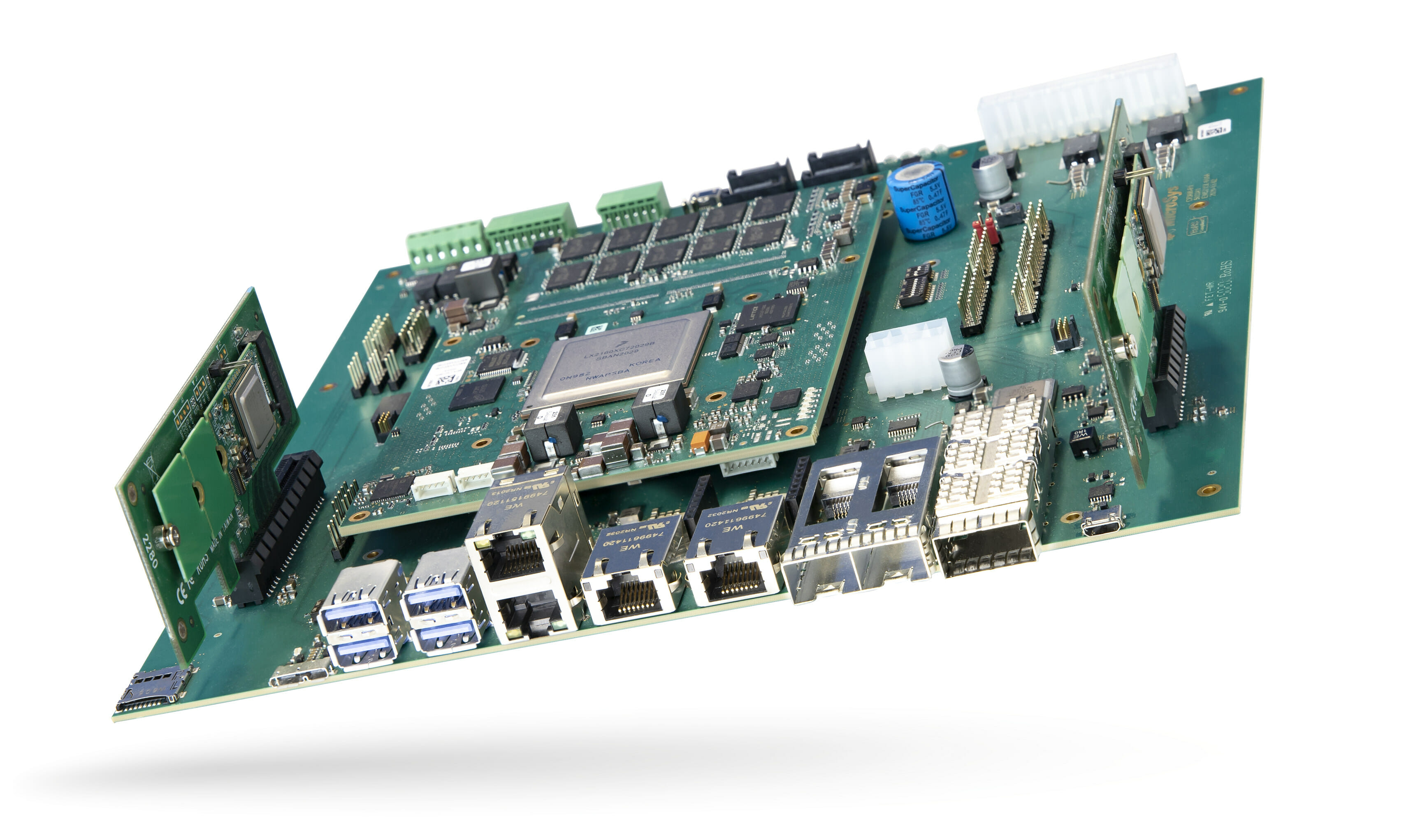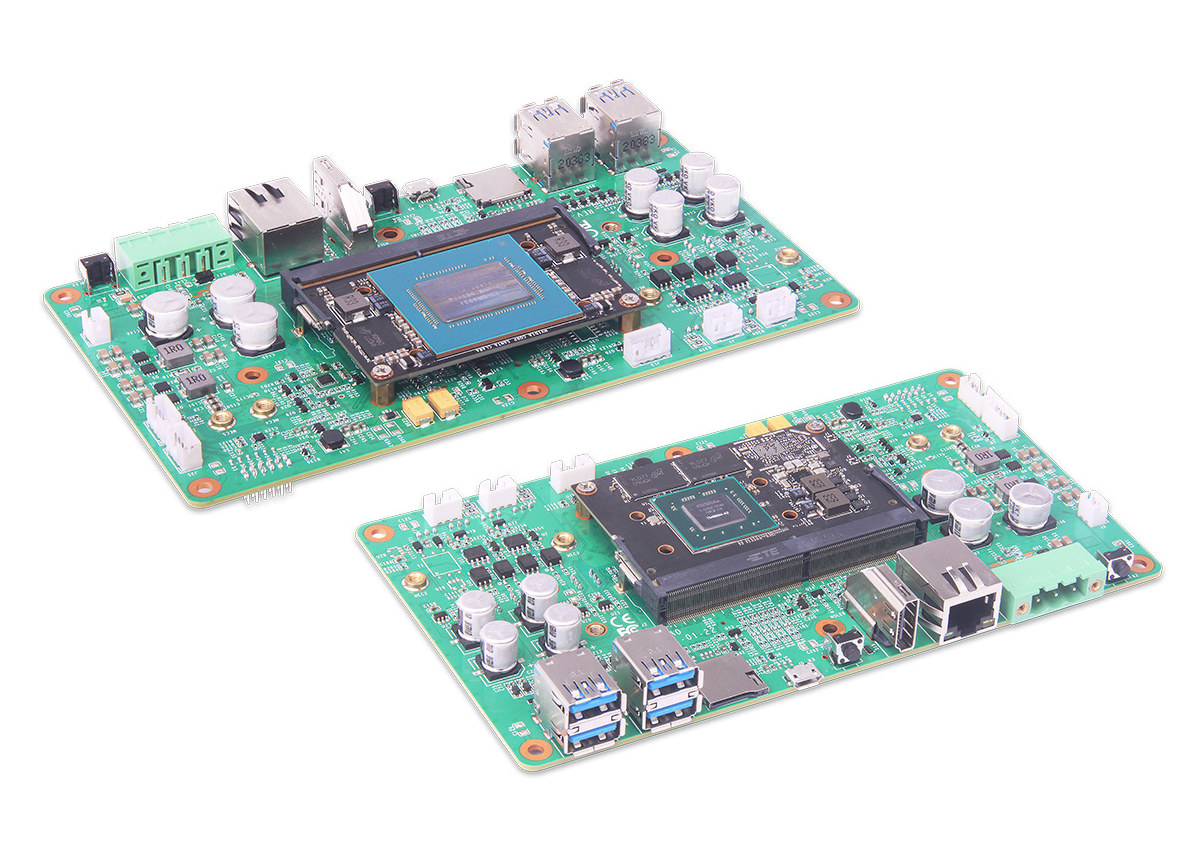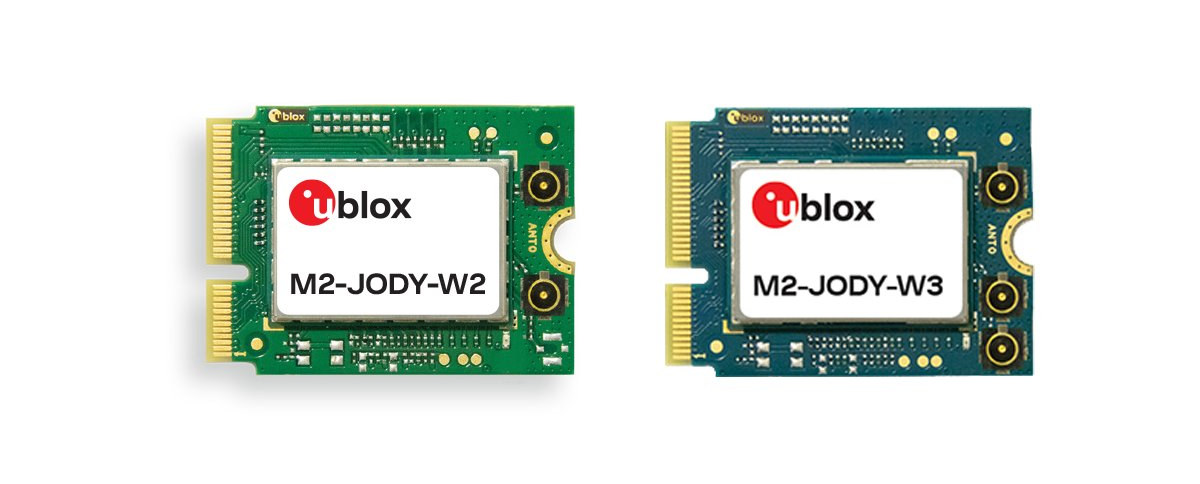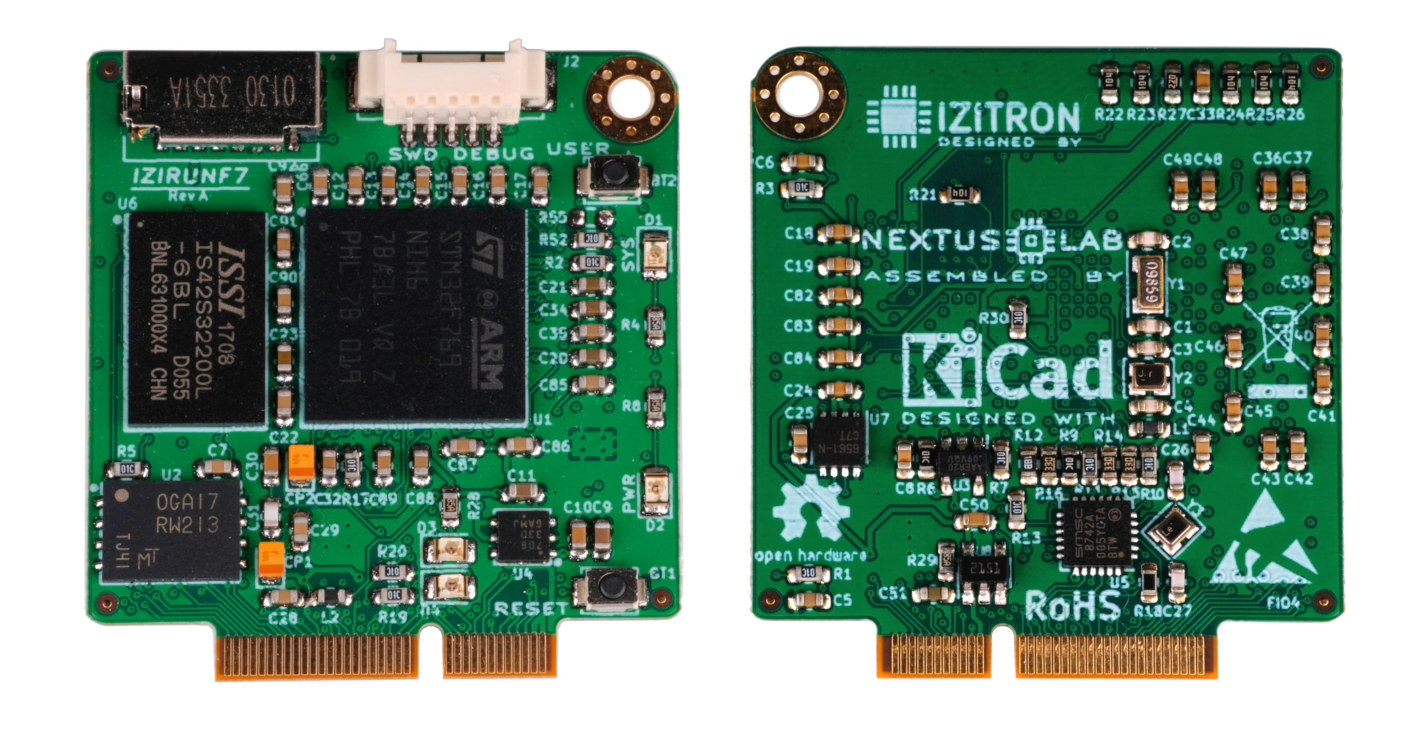When we first wrote about Flex Logix InferX X1 AI inference accelerator in 2020, the InfexX X1M M.2 AI accelerator module for edge servers, PCs, laptops, and embedded systems. was expected in Q2 2021. It took longer than planned but the company has finally announced production availability of the InferX X1M board in M.2 2280 form factor, or about the size of a stick of gum, to fit into power-constrained applications such as robotic vision, industrial, security, and retail analytics. InferX X1M module specifications: InferX X1 Edge Inference Accelerator with 4K MACs with 8 MB of distributed SRAM, and an eFPGA with 4MB DDR3 RAM System Memory – LPDDR4X (capacity undisclosed) Interface – M.2 B+M Key edge connector with x4 PCIe GEN3/4 Dimensions – 22mm x 80mm Power Budget – 6 to 8.2W TDP Flex Logix does not provide a lot of information on the product page, and instead, it’s […]
3.5-inch Elkhart Lake SBC offers dual GbE, 4x M.2 sockets, 5G cellular support
AAEON GENE-EHL5 is a 3.5-inch Subcompact board based on Intel Atom x6000E Series, Pentium, and Celeron “Elkhart Lake” processors with four M.2 expansion slots for wireless connectivity (5G, WiFi, etc…) and NVMe modules, as well as two Gigabit Ethernet ports. The single board computer comes with one DDR4 SODIMM slot for up to 32GB IBECC memory, supports SATA and NVME storage, offers DisplayPort and HDMI, and eDP/LVDS video interface, as well as wide DC input from 9-36V, although there’s also a cost-down option for 12V DC input only. AAEON GENE-EHL5 specifications: Elkhart Lake SoC (one or the other) with Intel UHD graphics Intel Atom x6425RE quad-core processor @ 1.90 GHz; 12W TDP Intel Atom x6425E quad-core processor @ 2.00 GHz / 3.00 GHz (Turbo); 12W TDP Intel Atom x6211E dual-core processor @ 1.30 GHz / 3.00 GHz; 6W TDP Intel Pentium J6426 quad-core processor @ 2.00 GHz / 3.00 GHz; […]
Blues Wireless launches Wi-Fi Notecard for mixed cellular & WiFi IoT deployments
Blues Wireless has just launched the Wi-Fi Notecard M.2 module that can be used as a replacement to the company’s Notecard LTE Cat-M / NB-IoT M.2 modem that sells with 10 years of connectivity up to 500MB for $49 and up. The Wi-Fi Notecard came to be as some customers wanted to have mixed deployments where cellular makes sense in some locations, while Wi-Fi is better suited to other sites. Others preferred to use WiFi during development or prototyping to save on Notecard cellular data usage. Wi-Fi Notecard specifications: MCU – Arm Cortex-M4 MCU with 2MB flash Wireless Silicon Labs WFM200S Wi-Fi transceiver module with a 2.4 GHz 802.11b/g/n radio supporting up to 72 Mbps link u.FL antenna connector Host interface – M.2 edge connector with I2C, UART, USB Sensor – 3-axis accelerometer and temperature sensor Security – STSAFE Secure Element with hardware crypto, true hardware random number generator, and […]
Add 10GbE to your system with an M.2 2280 module
It’s now possible to add 10GbE through an M.2 socket thanks to Innodisk EGPL-T101 M.2 2280 module based on Marvell AQtion Ethernet controller offering support for 10Gbps, 5Gbps, 2.5Gbps, 1000M, and 100M/10M LAN speeds. The solution is comprised of three parts with the M.2 module equipped with a heatsink to cool the Ethernet controller, a flexible high-speed cable, and a daughter board with an RJ45 connector and two threads for mounting to a chassis. Innodisk EGPL-T101 specifications: Ethernet controller – Marvell AQtion likely AQC113 “single-port 6speed, 10Gbps PCIe to Multi-Gig Ethernet controller with MAC and PHY with I-grade support” M.2 input interface – PCI Express 3.0 x 2 RJ45 connector for up to 10GbE Power Consumption – Up to 2.5W (3.3V, 762mA) Dimensions (W x L x H/mm) M.2 Board: 22 x 80 x 14.5 mm (M.2 2280 form factor) Daughter Board: 31.75 x 28 x 17.7 mm Temperature Range […]
miriac AIP-LX2160A 16-core embedded platform delivers up to 130 TOPS with 5 Hailo-8 modules
MicroSys Electronics miriac AIP-LX2160A embedded platform combines a 16-core Cortex-A72 NXP LX2160A networking processor with up to five Hailo-8 AI accelerator modules delivering up to 130 TOPS of AI inference performance. The board supports up to 128 GB RAM, up to 4x SATA hard drives, up to 100GbE connectivity, and appears to be especially suited to applications with multiple IP video streams requiring real-time video analytics. miriac AIP-LX2160A specifications: SoC – NXP Layerscape LX2160A with 16 Arm Cortex-A72 cores @ up to 2.2 GHz AI accelerators – 2x Hailo-8 M.2 AI Acceleration Modules, upgradeable to up to 5 Modules via NGFF M.2 Key M card System Memory – Up to 128 GB DDR4 RAM & optional ECC, up to 3200MT/sec, up to 4 ranks (combined design: 2x discrete & 2x SODIMM) Storage 4x SATA III ports Up to 256 GB eMMC 5.1 flash, additional eMMC device on carrier board Up […]
Jetson Nano & Xavier NX carrier board offers 3x M.2 sockets, 10x RS232/RS485 interfaces
Geniatech NVJ100AI/NVJ100AIX is a carrier board fitted with either Jetson Nano or Jetson Xavier NX SoM with good expansion capabilities thanks to three M.2 sockets and ten RS232 and/or RS485 interfaces, plus the usual Gigabit Ethernet, USB ports, HDMI video interface, etc… Geniatech NVJ100AI/NVJ100AIX specifications: SoM Geniatech NVJ100AI – NVIDIA Jetson Nano with CPU – Quad-core Arm Cortex A57 MPCore processor @ up to 1.43 GHz GPU – Maxwell GPU, 128 CUDA core up to 512 GFLOPS (FP16) System Memory – 4GB LPDDR4 Storage – 16GB eMMC flash AI Performance – Up to 472 GFLOPS in 10 Watts mode Geniatech NVJ100AIX – NVIDIA Jetson Xavier NX CPU – Hexa-core NVIDIA Carmel ARMv8.2 64-bit CPU with 6MB L2 + 4MB L3 cache GPU – 384-core NVIDIA Volta GPU with 48 Tensor Cores Dedicated AI accelerators – 2x NVDLA Engines, 7-Way VLIW Vision Processor System Memory – 8GB LPDDR4 Storage – 16GB […]
u-blox introduces WiFI 5/6 & Bluetooth 5 M.2 cards
u-blox is well known for its wireless modules be it WiFi, Bluetooth, GPS, or cellular connectivity that are soldered unto CPU modules or boards. But the company has now introduced two M.2 cards with WiFi 5 or WiFi 6 and Bluetooth 5.x that work with NXP i.MX evaluation and development boards. M2-JODY-W2 M.2 card The M2-JODY-W2 card comes with the following features: Connectivity Wi-Fi 5 1×1 SISO IEEE 802.11ac data rates up to 433 Mbit/s (PHY, MCS9), beamforming Supports 802.11d/e/h (DFS)/i/k/r/u/v/w/ai Wi-Fi 20, 40, and 80 MHz channels Bluetooth BR/EDR and Bluetooth low energy v5.0 supporting 2 Mbit/s Access point mode for up to 8 stations 2x u.FL antenna connectors Host interfaces SDIO & UART host interfaces PCM interface for Bluetooth audio Security Hardware encryption engines: AES and TKIP WPA, WAPI, WPA2, WPA3, WPS, and Easy Connect Dimensions – M.2 Type 2230 Key E form factor Certifications – Chipset is […]
IZIRUN open-hardware STM32 development boards expose GPIOs through M.2 connector (Crowdfunding)
M.2 sockets are typically used to connect wireless or storage expansion boards to laptops, computers, and SBC’s. But nothing precludes them from being used for another purpose, and earlier this year we wrote about Sparkfun MicroMod MCU boards with an M.2 connector for GPIOs, I2C, SPI, etc… IZITRON has expanded the concept with three slightly larger (IZIRUN) STM32 boards routing more IOs to the M.2 connector, and additional features such as built-in EEPROM and buttons. IZIGOBOARD carrier board is then used to host the STM32F0, STM32F4, or STM32F7 board in order to ease development. IZIRUN STM32 development boards IZIRUN boards specifications: Microcontroller IZIRUNF0 – STMicro STM32F030CCT6 Cortex-M0 MCU @ 48 MHz with 256KB flash, 32 KB SRAM IZIRUNF4 – STMicro STM32F407VET6 Cortex-M4 MCU @ 168 MHz with 512KB flash, 192KB SRAM IZIRUNF7 – STMicro STM32F769NIH6 Cortex-M7 MCU @ 216 MHz with 2MB KB flash, 532KB SRAM On-board RAM – IZIRUNF7 […]


